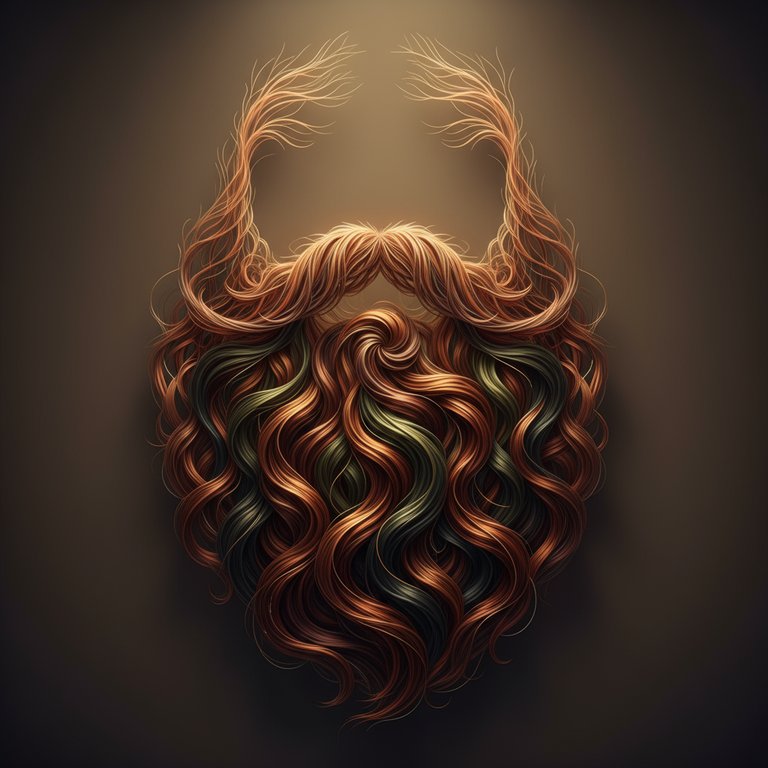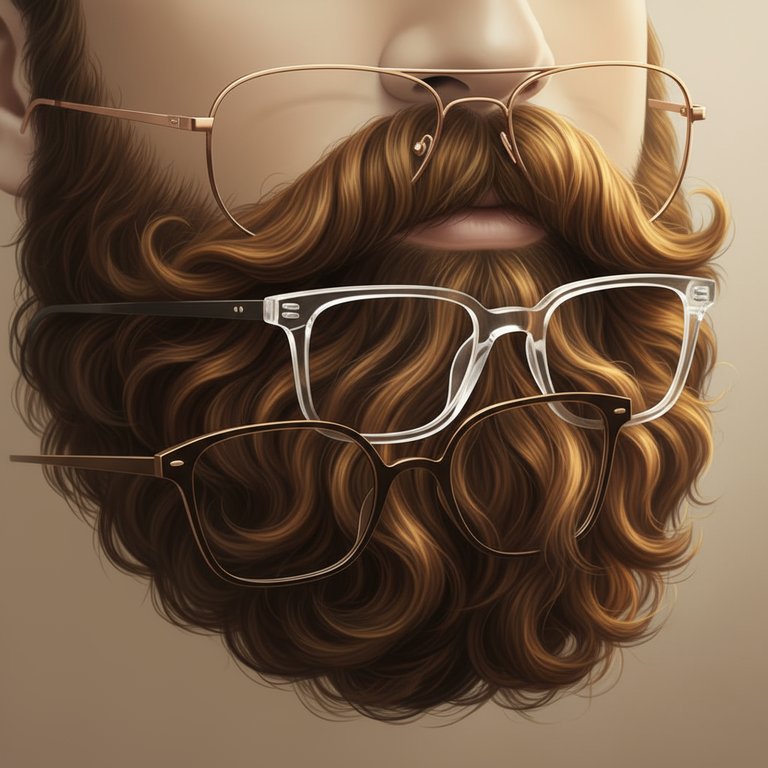Alright, let's be real for a moment. You’re looking in the mirror, diligently growing your beard, and then you spot it – a gap here, a thinner area there. A patchy beard. It’s a common challenge, my friend, and one that can be super frustrating when you're aiming for that majestic, full look. Trust me, you are not alone in this journey. Many of us have faced the 'patchy beard dilemma,' and the good news is, there’s plenty you can do to work with it, improve it, and even embrace it!
Understanding Your Beard's Unique Growth Pattern
Before we dive into fixes, let's talk about why some beards grow in a bit more unevenly than others. It's often down to a few factors, and most of them are completely normal. The biggest player is usually genetics. Just like the hair on your head, your beard's density, color, and growth pattern are largely predetermined by your DNA. If your dad or grandad had a beard that took its sweet time to fill in, or had a few thinner spots, chances are you might too.
Another common reason is simply that different areas of your face have different growth cycles. Hair grows in stages, and not all follicles are in the same stage at the same time. This means some areas might appear to 'catch up' later than others. When you're just starting your beard journey, these patches can be more noticeable. It’s not necessarily a sign that your beard won't fill in; it just might need a little more time and patience.
The Golden Rule: Patience, Patience, Patience!
I know, I know. It's not the quick fix you might be hoping for, but seriously, this is the most crucial piece of advice for dealing with a patchy beard. Many guys give up too soon, trimming their beard back after a few weeks because they see gaps. The truth is, it often takes anywhere from two to four months of consistent growth for your beard to truly start showing its full potential and for those shorter hairs to catch up.
During this initial growth phase, often called the 'awkward stage,' your beard is going to look a bit wild and probably pretty uneven. Those thinner areas will be much more obvious. But as the longer hairs grow out, they gain weight and can start to lay down, overlapping and effectively camouflaging those sparser spots. Resist the urge to trim too early! Let it grow out for at least 6-8 weeks before you even think about shaping.
Step-by-Step Guide: Tackling Patchiness Head-On
1. Let It Grow Longer Than You Think You Need To
As mentioned, this is step one. Aim for at least 2-3 months of uninterrupted growth. Seriously, put the trimmer down! The longer your beard gets, the more the hair follicles in the denser areas will grow over and conceal the areas that are less dense. What looks like a glaring patch when your beard is short might become completely unnoticeable once it has some length and weight.
2. Optimize Your Grooming Routine for Healthier Growth
A healthy beard is a happy beard, and a happy beard is more likely to grow to its fullest potential, even in patchy areas. A good routine supports the hair and the skin underneath.
- Wash and Condition Regularly: Use a dedicated beard wash and conditioner 2-3 times a week. This keeps your beard clean without stripping natural oils, and conditions the hair, making it softer and less prone to breakage. Healthy hair equals better growth.
- Introduce Beard Oil: This is your beard’s best friend. Apply beard oil daily, working it into the skin beneath your beard and throughout the hair. It moisturizes the skin, preventing dryness and itchiness, and nourishes the hair follicles, creating a better environment for growth. Think of it as fertilizer for your face forest!
- Consider Beard Balm: Once your beard has some length, a beard balm can be incredibly helpful. It offers a bit more hold than oil and can be used to direct and shape your beard. You can use balm to 'train' longer hairs to lie over thinner areas, effectively masking patches.
- Brush and Comb Daily: Invest in a good beard comb and boar bristle brush. Combing helps detangle and distribute natural oils and products evenly. Brushing helps exfoliate the skin, stimulate blood flow, and further distribute oils, which is good for healthy growth. Plus, it’s excellent for styling and 'sweeping' hair over those patchy areas.
3. Strategic Trimming and Styling
Once you’ve got some length, you can start being strategic. Instead of just trimming everything down, focus on shaping and evening out the *overall* silhouette of your beard, rather than trying to make every single hair the same length.
- Work With What You Have: Identify your denser areas and think about how you can style them to cover the sparser ones. For instance, if your cheeks are patchy but your chin is full, consider a style that emphasizes the chin, like a goatee, or allows the chin hair to grow longer and sweep up.
- Focus on the Outline: Instead of focusing on filling in patches directly, focus on creating clean, intentional lines around the edges of your beard. A well-defined neckline and cheek line can make even a slightly thinner beard look sharp and deliberate.
- Experiment with Styles: Some styles are naturally more forgiving for patchy growth. Shorter, more defined styles like a short boxed beard or even just stubble can look intentional even if your growth isn't uniform. As your beard grows, a medium-length full beard can allow the longer hairs to create a fuller appearance.
Lifestyle Adjustments for Supporting Healthy Growth
While these won't magically sprout hair where there are no follicles, they *do* contribute to overall hair health and can optimize the growth you *do* have.
- Balanced Diet: Your body needs the right building blocks. A diet rich in proteins, healthy fats, vitamins, and minerals supports healthy hair growth. Think lean meats, eggs, nuts, seeds, fruits, and vegetables.
- Stay Hydrated: Drinking enough water is crucial for overall health, and that includes hair health. Well-hydrated skin and hair are happier.
- Manage Stress: High stress levels can sometimes impact hair growth (on your head, too!). Finding ways to relax and de-stress is beneficial for your whole body.
- Get Enough Sleep: Sleep is when your body repairs and regenerates. Ensuring you get adequate rest can support optimal growth processes.
FAQ: Real Questions About Patchy Beards
Q1: How long does it take for beard patches to fill in?
A: This is highly individual, but generally, you need to commit to growing your beard for at least 2-4 months before you can truly assess its density and how much those patches might fill in. During the initial weeks, patches will be very noticeable. As your beard gains length, the longer hairs can start to cover these thinner areas. For some, a full year might be needed to see maximum density. Patience really is key here!
Q2: Can trimming make my patchy beard worse?
A: Trimming *too early* or *too aggressively* can definitely make patchy areas more obvious. If you trim your beard short before the longer hairs have a chance to grow out and cover the thinner spots, you essentially reset your progress. When you do trim, focus on shaping the overall outline and evening out the length of the *fuller* areas, allowing the patchy spots to continue growing and blend in.
Q3: What beard styles are best for patchy growth?
A: For initial patchy growth, consider letting it grow out longer to leverage the fuller areas to cover thinner ones. If your cheeks are sparse but your chin is dense, a Van Dyke or goatee can be a stylish option. A short boxed beard or a well-maintained stubble can also look very intentional and sharp, even with slight patchiness. As it gets longer, a medium-length full beard often allows enough hair to drape and conceal.
Q4: Should I use special products to fix a patchy beard?
A: There aren't any 'magic' products that will create hair where none exists. However, using a consistent grooming routine with quality beard oil, balm, and a good beard wash and conditioner can significantly improve the health and appearance of the hair you *do* have. Healthy hair grows better, looks thicker, and is more manageable for styling, which can help camouflage patchy areas. Focus on products that nourish and support existing growth.
Q5: Is it normal to have a patchy beard at first?
A: Absolutely! It's incredibly common and completely normal, especially in the first few weeks or months of growing a beard. Different hair follicles on your face can be in different growth stages, leading to unevenness. Genetics also play a huge role. Don't be discouraged; most beards go through an awkward, patchy phase before they start to fill in and take on their final form.
Conclusion: Embrace Your Beard Journey
Dealing with a patchy beard can be a test of patience, but remember, every beard has its own unique character and growth pattern. By giving your beard enough time, maintaining a consistent and nourishing grooming routine, making smart lifestyle choices, and learning a few strategic styling tricks, you can absolutely achieve a fantastic looking beard that you'll be proud to show off. Don't compare your growth to others; celebrate your own progress. With a bit of dedication and the right approach, those patches will either fill in, or you’ll learn to style your way around them like a pro. Happy growing, my friend!
Disclaimer: This content is for informational purposes only and is not intended to provide professional advice. Always consult with a qualified professional for any personal concerns.



